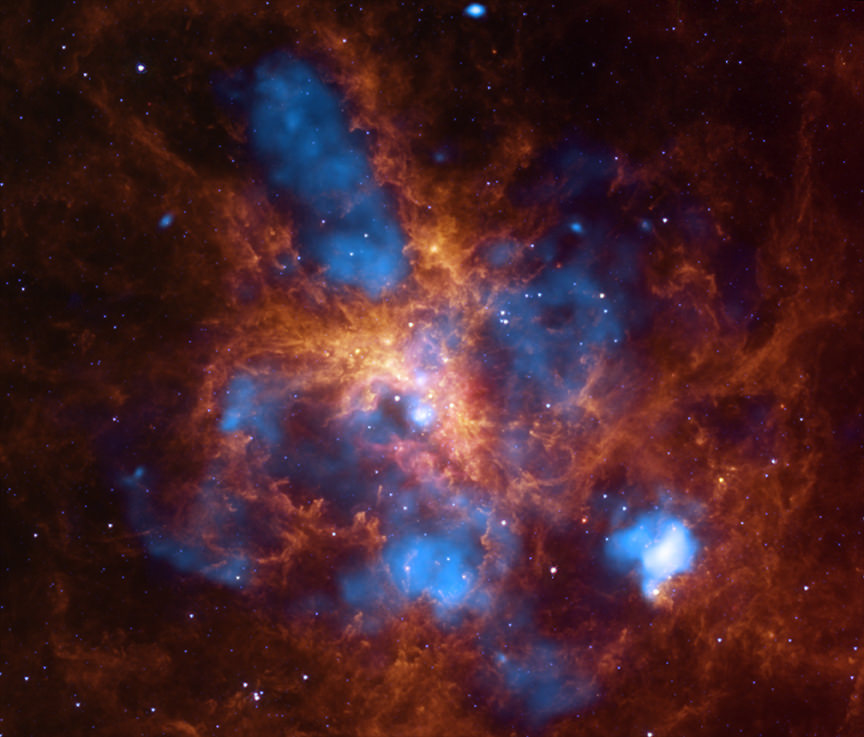Don’t like spiders? Well, here’s one that will grow on you! Located about 160,000 light years in the web of the Large Magellanic Cloud, star-forming region 30 Doradus is best known as the “Tarantula Nebula”. But don’t let it “bug” you… this space-born arachnid is home to giant stars whose intense radiation causes stellar winds to blast through surrounding gases to give us an incredible view!
When seen through the eyes of the Chandra X-ray Observatory, these huge shockwaves of x-ray energy heat the encompassing gaseous environment up to multi-millions of degrees and show up as blue. The supernovae detonations blast their way outward… gouging out “bubbles” in the cooler gas and dust. They show up hued as orange when observed through infra-red emissions and recorded by the Spitzer Space Telescope.
What’s so special about the Tarantula? Because it is so close, it’s a prime candidate for studying an active HII region. This stellar nursery is the largest in our Local Group and a perfect laboratory for monitoring stellar evolution. Right now astronomers are intensely interested in what causes growth on such a large scale – and their curent findings show it doesn’t have anything to do with pressure and radiation from the massive stars. However, an earlier study had opposing conclusions when it came to 30 Doradus’ central regions. By employing the Chandra Observatory observations, we may just find different opinions!
“Observations show that star formation is an inefficient and slow process. This result can be attributed to the injection of energy and momentum by stars that prevents free-fall collapse of molecular clouds. The mechanism of this stellar feedback is debated theoretically; possible sources of pressure include the classical warm H II gas, the hot gas generated by shock heating from stellar winds and supernovae, direct radiation of stars, and the dust-processed radiation field trapped inside the H II shell.” says Laura Lopez (et al). “By contrast, the dust-processed radiation pressure and hot gas pressure are generally weak and not dynamically important, although the hot gas pressure may have played a more significant role at early times.”
Original Story Source: Chandra News Release. For Further Reading: What Drives the Expansion of Giant H II Regions?: A Study of Stellar Feedback in 30 Doradus.


It seems there are hints of a lot more collisions and orbital changes in our solar system than perhaps was originally contemplated from nebula theory. There’s probably an unexpected story to be told by the asteroids which could be the key to Earth, Moon and even why we are all here. Given their potential resource benefits and the possibility of making space exploration pay for itself, I hope we go visit them very soon.